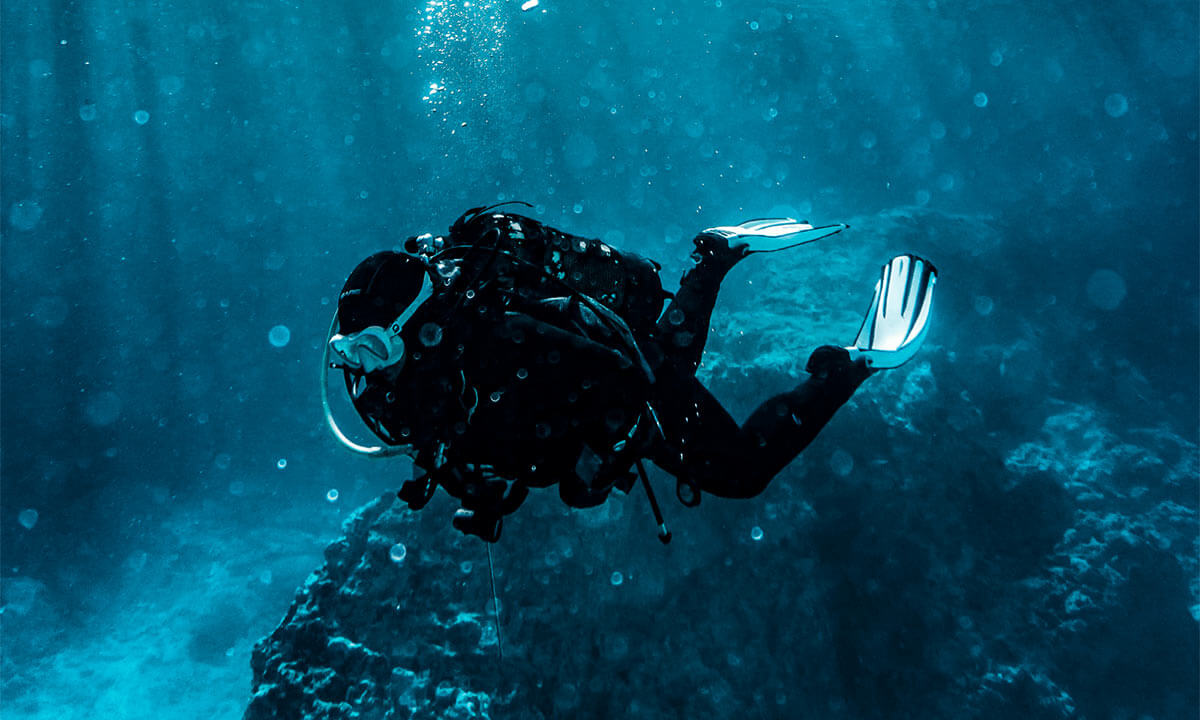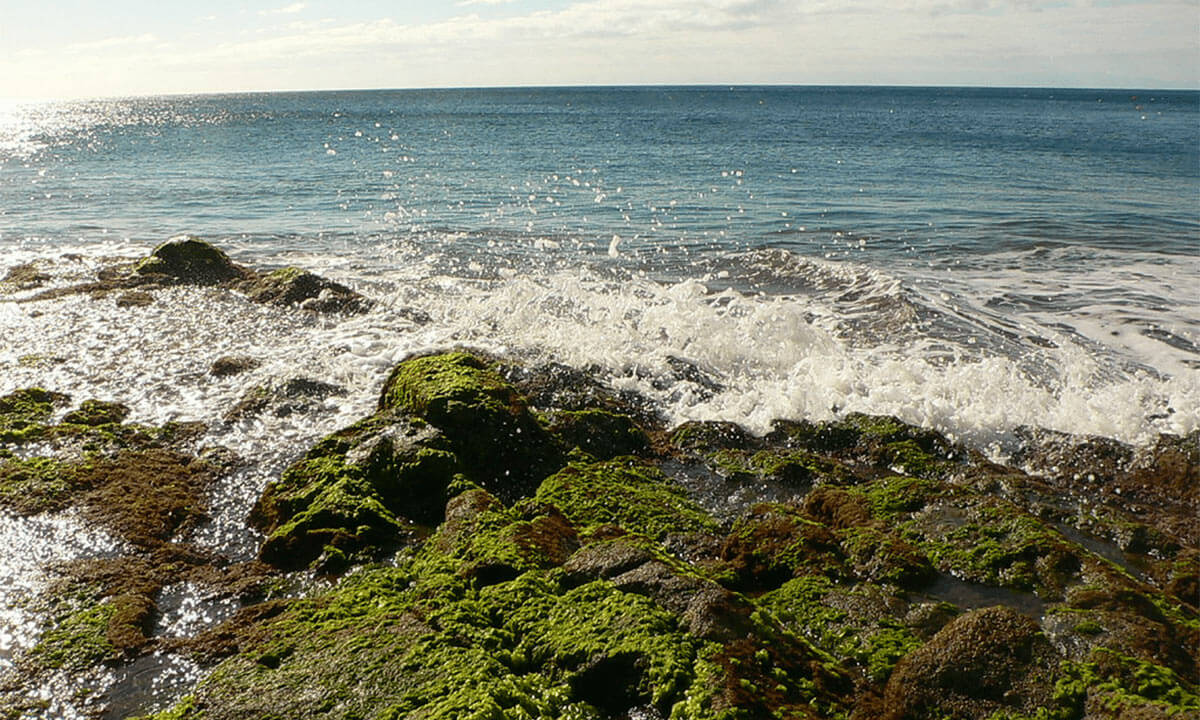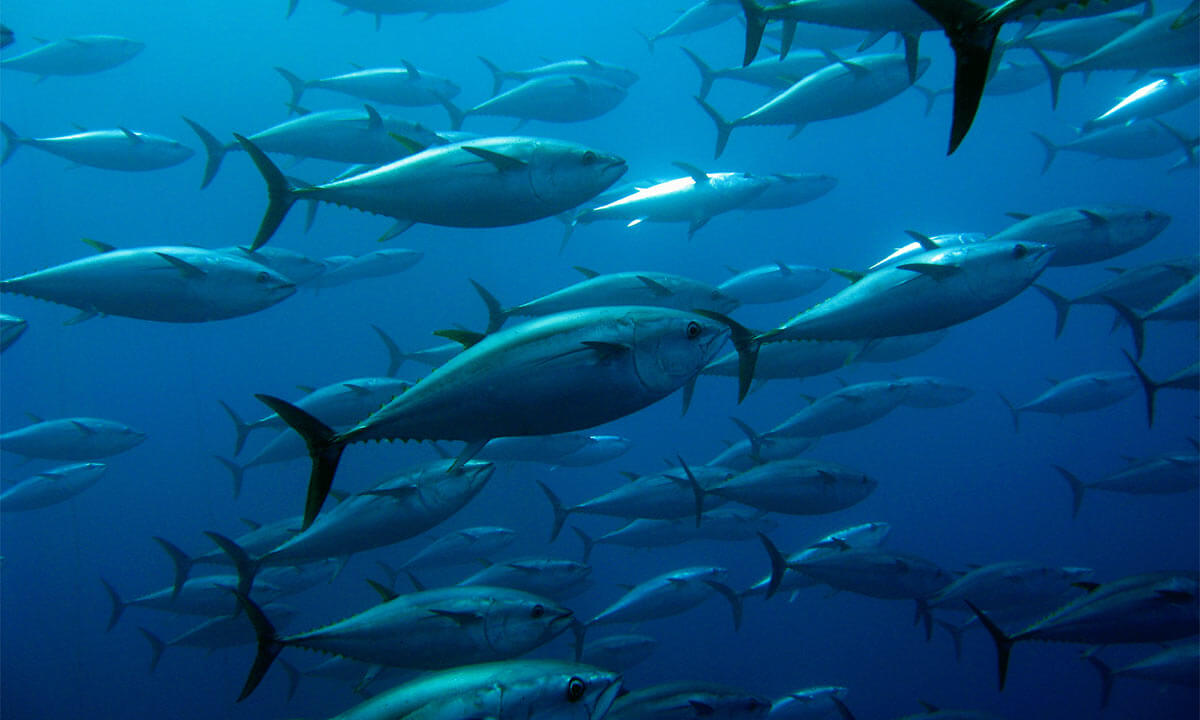5 magical places to go scuba diving in Gran Canaria

Gran Canaria’s waters are a paradise for diving enthusiasts. From north to south, this island has countless places to scuba dive. Its turquoise, rocky waters, with good visibility and good temperatures, make dives here a unique and enriching experience for anyone who swims in them. Its marine fauna is also notable for its countless native fish species. Do you want to find out more?
El Cabrón Marine Reserve
The El Cabrón Marine Reserve is located on the eastern side of Gran Canaria’s coast. Its great marine wealth has made this a unique destination for divers, regardless of their level of expertise: both beginners and experts can dive here.
During this dive, you will admire a wide variety of fish species: shoals of sargo, Atlantic horse mackerel and vieja may surprise you while you go through the caves of El Arco Chico, Los Roncadores or Punta de Sal. Moreover, if you decide to dive at colder times of the year, you will have the opportunity to see some angelshark nearby.
You can also do this dive as a kind of gymkhana. Here the most daring and expert divers will be able to go through the tunnels, caves and geological passages found on the Reserve’s seabed. Are you ready for it?
Sardina del Norte

The wild coast of Sardina del Norte is the perfect place for diving. In fact, it is considered one of the most accessible places for divers who are still beginners. Why?
It is a shallow area inhabited by spectacular marine fauna: sea urchins, seahorses, octopus and cuttlefish are just some of the species you might encounter. In fact, if you swim in autumn, it’s not uncommon to see the impressive stingrays, which can reach up to five metres in length from fin to fin.
And if you’re a fan of underwater photography, Sardina del Norte is the perfect place for you. Currents hardly touch it, and if you have the eye for it, you can capture beautiful images of fish thanks to the good visibility.
Barra de Las Canteras beach
This destination is also a great place to start diving. La Barra de Las Canteras is located in the capital of Gran Canaria, on one of the busiest avenues on the island. An urban beach that also has all kinds of facilities for buying or renting diving equipment.
And it’s impossible to miss La Barra itself. From the pier you can see the dense block of sand that forms it, home to a large amount of marine fauna.
While you can enjoy this dive with just a mask, you can get out your wetsuit and dive down its eight metres to swim with the hundreds of fish in the area. Some of the most common are the Canary damsel and sargo, but you can also encounter squid, octopus and even some angelshark or small sharks.
The Blue Bird of Mogán

At 47 metres deep off the coast of Mogán is the Blue Bird, a 30-metre ship that sank two decades ago and today is a kind of metal sculpture at the bottom of the ocean.
While the shipwreck of the Blue Bird rests on a peaceful white sand ‘bed’, shoals of amberjack and tuna swim at ease, accompanied by stingrays and angelshark.
As you might imagine, because of its depth and the strong currents in the area, it is a dive recommended for experienced divers. In fact, it is required to have deep diving certification. If you meet the requirements, several companies in the area will be able to take you and guide you to one of the most hypnotizing submarine enclaves in Gran Canaria.
La Catedral
Near the La Isleta neighbourhood, you will find a rocky area in the sea called La Catedral. Its name (the cathedral) is no coincidence.
The spectacular volcanic formations there are sculpted into a kind of Gothic building decorated with sharp rocks, caves and passageways. It is inhabited by small species, such as shrimp, comber and sea urchins, which hide in the rock crevices.
This is another dive for experts, not only because it is 40 metres deep, but also because it is easy to get lost among La Catedral’s many passages if you don’t know it well. It is important to take a torch to combat the dark and check that the currents are not too strong in order to avoid accidents.
Categories: Canaries, Gran Canaria



Leave a Comment